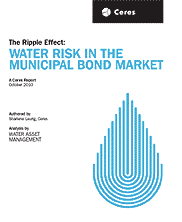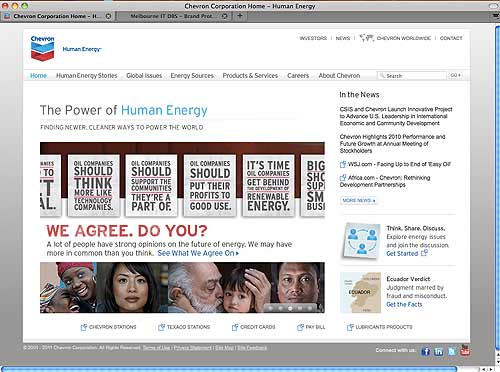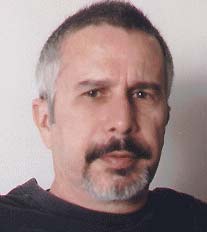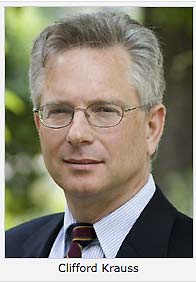Biblio
Our mission is to explore life beneath the seafloor and make transformative discoveries that advance science, benefit society, and inspire people of all ages and origins.
In a provocative 1992 essay, Thomas Gold postulated the existence of a "deep, hot biosphere", supported by geological energy sources. The potential for the oceanic deep biosphere to influence global biogeochemical processes scales with the size of the subseafloor as a habitat.
See: Probe Earth's Interior with Advanced Radiation Sources
The ramifications of a massive buried biosphere of "intraterrestrial microbes" are significant, leading to paradigm shifts in our thinking in the biosciences and geosciences.
"Despite an intense focus on discovering abiotic hydrocarbon sources in natural settings, only a handful of sites convincingly suggest that abiotic organic synthesis occurs within the geosphere...
...The crux of this topic is that currently there is no foolproof approach to distinguishing abiotic versus biotic organic synthesis. Thus, it is especially important to be cognizant of the possibilities and limitations of abiotic hydrocarbon production when considering a deep subsurface biosphere where the organic matter may be synthesized by both abiotic and biotic processes." (Proskurowski, 2010)
See: Life in the Oceans | The Why Files.
See: The Sloan - Deep Carbon Observatory (DCO)
The Deep Carbon Observatory is a program of the Carnegie Institution for Science, Alfred P. Sloan Foundation, and the Carnegie Institution of Washington.
The Sloan - DCO mission includes the fostering of international cooperation in addressing global-scale questions, including the nature and extent of deep microbial life, the fluxes of carbon dioxide from the world's volcanoes, and the distribution and characteristics of deep hydrocarbon reservoirs.
The DCO is currently composed of four science directorates: Deep Life; Reservoirs and Fluxes; Energy, Environment, and Climate; and Physics and Chemistry of Carbon.
Gold, Thomas. The Deep Hot Biosphere : The Myth of Fossil Fuels. New York: Springer | Copernicus, 1998.
Goncharov, Alexander. “Unanswered Questions in Deep Carbon Research” presented at the 2009 Annual Meeting keynote | Sloan Deep Carbon Cycle Workshop, Carnegie Institution, Geophysical Laboratory | Washington, D.C., May 15, 2008. (PDF 4.4 MB)
Proskurowski, G. “Abiogenic Hydrocarbon Production at the Geosphere-Biosphere Interface via Serpentinization Reactions” in Timmis, Kenneth N., ed. Handbook of Hydrocarbon and Lipid Microbiology. Berlin, Heidelberg: Springer, 2010.
The Center for Healthy Environments and Communities (CHEC) exists to help individuals & communities identify the most important environmental problems facing them - empowering & energizing them with tools to prioritize & develop their own action plans towards more sustainable solutions for a healthy environment. Read more»
Check out FracTracker.org! The blog part provides a forum to discuss the impacts you have seen or felt regarding natural gas drilling in this region, as well as share data through the site's online data tool.
The data tool is an online information commons where you can access & upload all sorts of geographically-linked data. We will be hosting regional training sessions this summer on how to use FracTracker. Contact us with questions or to find out when & where the trainings will occur.
According to a review by Josh Kusnetz of ProPublica, FracTracker "allows people to search by topic or select a specific area on a map. It also shows who uploaded the specific data set and whether other people have downloaded it or found it helpful.
Since anyone can upload a data set, this transparency is critical to determining whether the information is reliable. CHEC will remove irrelevant data, but it doesn’t vet everything for accuracy. CHEC is counting on users to police the data themselves and to distinguish the good from the bad."
According their website, Ceres (pronounced “series”) is a national network of investors, environmental organizations and other public interest groups working with companies and investors to address sustainability challenges such as global climate change.
Ceres also directs the Investor Network on Climate Risk, a network of 90 investors with collective assets totaling about $10 trillion.
See: Ceres. August 5, 2010. "Investors Managing $2.5 Trillion Press Energy Companies to Better Disclose Spill Prevention and Response Plans for Deepwater Wells Worldwide".
"It is important for all companies involved in subsea deepwater drilling to be open and transparent with investors and stakeholders at this crucial historic moment," wrote the investors.
A report published on 3BL Media, Dec. 14, 2010, stated that the request was made in a letter last week from the Investor Network on Climate Risk (INCR), a network of 98 investors with collective assets totaling over $9 trillion. It was sent to the National Commission on the BP Deepwater Horizon Oil Spill and Offshore Drilling, whose final report and recommendations are expected in January. It was signed by Mindy S. Lubber President, Ceres Director, Investor Network on Climate Risk.
See: The Investor Environmental Health Network. 2010. Overview: Hydraulic Fracturing for Natural Gas Development.
See: Before the Big Spill | Mixplex
See: National Commission on the BP Deepwater Horizon Oil Spill and Offshore Drilling | Mixplex
See: Sharlene Leurig, Water Asset Management, Ceres Report. October 2010. "The Ripple Effect: Water Risk in the Municipal Bond Market". Investor Network on Climate Risk. (PDF Download 6.6MB).
This report shows that few participants in the bond market—including investors, bond rating agencies and the utilities themselves—are accounting for growing water scarcity, legal conflicts and other threats in their analyses.
See: Futurism Now
See: H2Oil: An Explanation of the Tar Sands in Alberta
See: Keystone XL Pipeline - Issues
See: As You Sow - Corporate Accountability, Shareholder Action, and ToxicsReduction
This video shows a Grandfather changing the water filter on his well water in Prenter, WV. Coal Waste has been injected into abandoned underground mines near his house. See sludgesafety.org for more info on coal slurry.
Hydrofracking involves storing gas underground and disposing of fracking sludge in abandoned mines, both a potential threat to groundwater.
See Aurora Lights article on Coal Mining's effect on clean water in West Virginia.
Home page of "one of the largest producers of natural gas in the nation and the most active driller of new wells in the U.S."
Follow links on lower right side to See: Dave Spigelmeyer, Vice-President Government Relations, Chesapeake Energy.
"Open Letter to the State of New York", (February 18, 2010) advertisement publshed in Elmira Star-Gazette.
Read between the lines at The Fighting 29th, a New York State blog, home to former Congressman Eric Massa who resigned in March 2010.
See also: Chesapeake Energy: Fact Sheets On Horizontal Drilling, Hydraulic Fracturing and Water Usage. Chesapeake Energy's Media Resources Page includes: Chesapeake (Chesapeake). 2009a. Hydraulic Fracturing Fact Sheet, May 2009. Submitted to U.S. House of Representative Committee on Natural Resources.
Chesapeake Energy breaks another promise. In meetings with Fort Worth, Texas residents, Chesapeake promised Fort they wouldn't flare the Barnett Shale gas wells in the Trinity Trees area.
See: Bluedaze by Sharon Wilson (TXSharon). December 6, 2010. "Chesapeake Energy uses fear to divide communities and pit neighbor against neighbor".
See: Poison Fire.
At Chevron, our businesses work in concert to provide the energy that drives human progress. Explore Chevron’s companies to learn how we use our global resources, determination and ingenuity to meet today’s complex energy challenges.
According to the EPA's National Emission Inventory, Chevron was responsible for 4,030,422.95 pounds of green house gas emission pollution in Plaquemines Parish, Louisiana in 2002.
Chevron was the first international oil company to operate in Nigeria and has, for almost 40 years of operations there, practiced the wasteful process of burning off of gas associated with oil drilling. [1]
Exxon Mobil Corp., ConocoPhillips, Chevron Corp. and Royal Dutch Shell Plc are as ill-prepared as BP Plc to halt and clean up an offshore oil spill because they all use “carbon copy” disaster plans, lawmakers said.
“The oil company response plans are great for public relations but these plans are virtually worthless in the event of a spill,” said Representative Bart T. Stupak, a Michigan Democrat. “It could be said that BP is the one bad apple in the bunch, but unfortunately, they appear to have plenty of company.” [2]
[1] Friends of the Earth. “The Case of Chevron.” Friends of the Earth, 2011. http://action.foe.org/content.jsp?key=3493.
[2] Jim Efstathiou Jr. and Joe Carroll. Jun 15, 2010. "Exxon, Others Slammed for Carbon-Copy Oil-Spill Plans". Bloomberg News.
A Satirical Tale of Two Chevrons
The Power of Chevron (2009)
Chevron is working to reduce greenhouse gas (GHG) emissions while expanding its energy supply portfolio to meet the world's energy needs.
Chevron climate change advisor Arthur Lee is an expert in carbon capture and storage. He has participated in industry workshops and the Intergovernmental Panel on Climate Change's (IPCC) Report on Carbon Dioxide Capture and Storage.
The Power of Chevron's Human Energy (2008)
The Power of Chevron's Human Energy (2008)
Video mashup by Jonathan Mcintosh | rebelliouspixels.com.
This is an identity correction remix that turns Chevron's multi-million dollar Human Energy greenwashing PR blitz on its head.
Though the video targets Chevron Oil and their Orwellian "Human Energy" campaign, it also focuses more broadly on corporate control of global oil supplies and the connection to aggressive American foreign policy.
In this corrected commercial the company's true nature is exposed for what it is, a heartless profit-driven oil machine. The Chevron corporation is not only an ecological catastrophe around the world but still does business with the Burma dictatorship, has oil contracts in war-torn Iraq and is responsible for human rights atrocities in the Niger Delta, among other unpleasant and nasty things.
This Political Remix Video is a critical and transformative work that constitutes a Fair Use in accordance with Title 17 U.S.C. Section 107. Source footage from Chevron TV ads, US Army ad, BBC News, Future Weapons, CSI and several other short clips recorded off television.
See: About Jonathan McIntosh | Rebellious Pixels - Digital Home of Jonathan McIntosh
Update:
Date: Mon, 06 Jun 2011 21:52:53 -0400
From: neil zusman <zusman@earthlink.net>
To: ChevronBPS <ChevronBPS@melbourneitdbs.com>
Subject: Re: Unauthorized Chevron Logo usage in your site - (http://frack.mixplex.com/content/chevron-corporation-human-energy)
- 1st Notice
On 6/6/11 5:31 PM, ChevronBPS wrote:
> Melbourne IT DBS Inc.
A recent review of your web site
*(http://frack.mixplex.com/content/chevron-corporation-human-energy)* indicated
that you are using one of Chevron's registered trademarks.
Chevron does not allow such use of its trademarks without express
written permission. We are advised that Chevron has no record of
such permission being granted.
If permission was granted from Chevron, please forward a copy of the
permission letter to Chevronbps@melbourneitdbs.com for their files.
If you did not receive permission from Chevron to post the logo on
your web site above, please remove the logo from your web site and
from all other locations where it is being used.
Thank you for your interest in my website. The piece needed editing.
As Chevron has requested, I removed the logo you are inquiring about and
replaced it with a screen shot of Chevron's website to ensure my
readers the clarity of context. The analysis of media and corporate
responsibility by energy sector companies are important to me. If you
wish to consider this matter further, I look forward to discussing your
concerns about Chevron's trademark rights in my representation of
Chevron as well as my Fair Use rights under Title 17 U.S.C. Section 107.
I welcome a productive and healthy relationship with Chevron and its
subsidiaries in the consideration of environmental issues and prudent
government regulation and trust that our covenant with the Earth will be
of mutual benefit.
Sincerely,
Neil Zusman
Fracking Resource Guide
See: News Updates on Chevron. 2011-06-06.
See: The Case of Chevron
See: BP Deepwater Horizon Committee Hears From Oil Industry Executives. 9-26-2010.
See: Poison Fire
See: Rancho Los Malulos | A satirical view from the McGill Brothers Lease
See: Natural gas: the commodity world’s ugly duckling
See: Controversial gas 'fracking' extraction headed to Europe
See: As You Sow - Corporate Accountability, Shareholder Action, and ToxicsReduction
See: The Yes Men | Climate Pledge of Resistance
See: Heather Clancy. "Shareholder flack flies over fracking". SmartPlanet. June 3, 2011.
...Open and honest communication, a safe working environment, ethical business practices and good neighbor initiatives are all an important part of how we do business each and every day.
Chief's gas well in Moundsville, West Virginia exploded June 7, 2010. Read the report from Pittsburgh Tribune Review.
Chief's most recent focus has been the development of the Marcellus Shale, a formation that runs from the southern tier of New York, through the western portion of Pennsylvania into the eastern half of Ohio and through Maryland and West Virginia. Chief currently holds more than 580,000 acres in Appalachia.
Susan Christopherson, J. Thomas Clark Professor of City and Regional Planning, has received a $100,000 grant from the Ithaca-based Park Foundation to study the economic effects of the proposed drilling in the Marcellus Shale, a rock formation that extends from New York south into Pennsylvania, Ohio, and West Virginia.
Christopherson has proposed conducting a $300,000 study that will examine issues such as the effects of the increase in gas drilling on schools, public health, and transportation systems.
The research project will be supported by several funders. “The question is, ‘What is going to be the cumulative effect of this kind of activity?’” says Christopherson, who specializes in economic development. “People are looking at this question from an environmental perspective, but no one is looking at it from an economic perspective.”
Christopherson worries about a “boom town” effect created by the surge of companies that want to extract natural gas from the Marcellus Shale. “We have had these periodically in the U.S. like the Gold Rush, where you get lots of people coming into an area in order to extract natural resources and then leaving,” she says.
Her hope is that the gas drilling could create a long-term investment in the economy of the Southern Tier. “I think they could do that,” she says, “but it has to be done very carefully. There has to be careful planning for the economy and to protect the environment. What people rarely recognize is that good environmental planning will also produce better economic outcomes.”
Secretary of Energy Steven Chu has appointed a panel of seven scientific and environmental worthies to study the rapidly growing method of natural gas extraction known as hydraulic fracturing and to make recommendations about how it can be done more cleanly and more safely.
The group includes John Deutch, a former Central Intelligence Agency director; Kathleen McGinty, a former top White House environmental adviser; and Daniel Yergin, probably the best-known oil industry analyst in the country...
Broder's piece goes on to offer a smokescreen of protest by the right, but according to Dusty Horwitt of the Environmental Working Group, “An industry insider like John Deutch is completely unacceptable to lead this panel...It looks as if the Obama Administration has already reached the conclusion that fracking is safe.”
Dr. Chu announced his decision late Thursday. This being Washington, House Republicans immediately issued a press release denouncing the study as wasteful, duplicative and yet another example of regulatory red tape run amok.
On the other side of the Capitol, Senator Richard Burr, Republican of North Carolina, went them one better, introducing a bill to dismantle the Department of Energy and the Environmental Protection Agency...
The EWG press release presents a clearer picture of the Administration's positioning and refers to a study by Duke University researchers, that found high concentrations of methane in 68 wells near shale-gas drilling and hydrofracking sites in northeastern Pennsylvania and New York, confirming property owners’ suspicions that gas extraction was leaking methane into their drinking water.
The "Paper of Record" has just as much a right as any blogger to present the facts or distort them.
In, "E.P.A. Proposes New Emission Standards for Power Plants", I caught the editors of the Times editing out an account of how Ms. Jackson invited a group of second graders from a nearby elementary school to the announcement. Earlier today, Mar. 17, it was edited out. Was it Broder and Rudolf, or the Times? Are children not newsworthy?
"She invited a group of second graders from a nearby elementary school to attend the rule’s unveiling at her agency."
Why did the Times delete it? The article as it first appears will always be located here. (PDF). The Google cache will expire as soon as you read this. See for yourself, read between the lines.
(Neil Zusman, 2011-03-17).
See: Clifford Krauss: propagandist par excellence
See: E.P.A. Proposes New Emission Standards for Power Plants
See: Scientific Study Links Flammable Drinking Water to Fracking
See: U.S. Congress. Committee on Space, Science, and Technology. "Hearing Highlights Lack of Objectivity in Draft EPA Fracking Study--No Evidence of Drinking Water Contamination from Fracking, Witnesses Say". May 11, 2011
A Project in Cooperation with the Thoreau Society.
The Thoreau Reader - Annotated works of Henry David Thoreau
While Walden can be applied to almost anyone's life, "Civil Disobedience" is like a venerated architectural landmark: it is preserved and admired, and sometimes visited, but for most of us there are not many occasions when it can actually be used.
Still, although seldom mentioned without references to Gandhi or King, "Civil Disobedience" has more history than many suspect.
In the 1940's it was read by the Danish resistance, in the 1950's it was cherished by those who opposed McCarthyism, in the 1960's it was influential in the struggle against South African apartheid, and in the 1970's it was discovered by a new generation of anti-war activists. The lesson learned from all this experience is that Thoreau's ideas really do work, just as he imagined they would.
See: The Higher Law: Thoreau on Civil Disobedience and Reform by Henry David Thoreau, edited by Wendell Glick, with an introduction by Howard Zinn.
As a result of his writings and personal witness, we are the heirs of a legacy of creative protest. - Martin Luther King, Jr, Autobiography
This work is included in Fracking Resource Guide as an homage to the many individual voices and blogs I will continue to read that help the world stay informed about the dangers of hydrofracking.
I will join you at the barricades. Drilling isn't safe.
See: Essay by Peter Suber. "Civil Disobedience".
...The Nuremberg principles require disobedience to national laws or orders which violate international law, an overriding duty even in (perhaps especially in) a democracy.
Americans depend on clean and abundant water. However, over the past decade, interpretations of Supreme Court rulings removed some critical waters from Federal protection, and caused confusion about which waters and wetlands are protected under the Clean Water Act. As a result, important waters now lack clear protection under the law, and businesses and regulators face uncertainty and delay. The Obama Administration is committed to protecting waters on which the health of people, the economy and ecosystems depend.
U.S. EPA and the U.S. Army Corps of Engineers have developed draft guidance for determining whether a waterway, water body, or wetland is protected by the Clean Water Act. This guidance would replace previous guidance to reaffirm protection for critical waters. It also will provide clearer, more predictable guidelines for determining which water bodies are protected by the Clean Water Act. The draft guidance will be open for 60 days of public comment to allow all stakeholders to provide input and feedback before it is finalized.
The draft guidance will reaffirm protections for small streams that feed into larger streams, rivers, bays and coastal waters. It will also reaffirm protection for wetlands that filter pollution and help protect communities from flooding. Discharging pollution into protected waters (e.g., dumping sewage, contaminants, or industrial pollution) or filling protected waters and wetlands (e.g., building a housing development or a parking lot) require permits. This guidance will keep safe the streams and wetlands that affect the quality of the water used for drinking, swimming, fishing, farming, manufacturing, tourism and other activities essential to the American economy and quality of life. It also will provide regulatory clarity, predictability, consistency and transparency.
See: William Ringler sentenced to prison of Clean Water Act violation
See: Supreme Court Restricts Clean Water Act
New York's drinking water is under threat from dirty drilling made possible by "hydraulic fracturing" -- but it doesn't have to be.
We can take a drilling "time-out" -- to learn the hard-won lessons of drilling-polluted communities in Pennsylvania, Colorado, and everywhere drillers pushed ahead without adequate regulation and enforcement.
How and Why Clean Water Protections Are Being Weakened
The Clean Water Act, as written in 1972, safeguards all of the "waters of the United States," through a number of programs. The federal Environmental Protection Agency (EPA) and Army Corps of Engineers regulations implementing the law have for decades reflected the intent of Congress to protect all of America's waters. These rules had been upheld by the vast majority of state and federal courts.
In 2001, however, a bare majority of the Supreme Court-in a case called Solid Waste Agency of Northern Cook Cty. v. Army Corps of Engineers - ruled 5-4 that the presence of a habitat for migratory birds is not sufficient justification for protection of a water that does not flow year round or that is an "isolated" wetland under the Clean Water Act. The decision in Rapanos v. United States in 2006 created further confusion about which waters deserved protection under the Clean Water Act.
...The Clean Water Restoration Act of 2009(S 787) introduced by Sen. Russell Feingold, D-WI, would accomplish these important goals and has been endorsed by Clean Water Action."
Clean Water Action: A Brief History
Mission Statement
Clean Water Action is an organization of 1.2 million members working to empower people to take action to protect America's waters, build healthy communities and to make democracy work for all of us. For 36 years Clean Water Action has succeeded in winning some of the nation's most important environmental protections through grassroots organizing, expert policy research and political advocacy focused on holding elected officials accountable to the public.
Passage of the original 1972 Clean Water Act, with many of the law's most important parts drafted by Clean Water Action, has been followed by other major successes. They include enactment of the federal Safe Drinking Water Act in 1974 and subsequent changes in 1996 that strengthened the law. Clean Water Action's successful defense in 1977 of the Clean Water Act's wetlands protection program was won by a single vote in the U.S. Senate.
Paul Schwartz, Clean Water Action National Policy Coordinator
202-895-0420 ext. 105
Take Action!
Clean Water Action: A Brief History
Mission Statement
Clean Water Action is an organization of 1.2 million members working to empower people to take action to protect America's waters, build healthy communities and to make democracy work for all of us. For 36 years Clean Water Action has succeeded in winning some of the nation's most important environmental protections through grassroots organizing, expert policy research and political advocacy focused on holding elected officials accountable to the public.
After having seen the powerful documentary Gasland that shows the impact of “fracking” on households across the United States, including flammable tap water and cancer clusters that are the inevitable outcome of natural gas drilling byproducts, I have begun to pay closer attention to news coverage, including my hometown papers in Upstate NY where energy companies are attempting to buy support from impoverished land owners.
So with that in mind, I read the article “When a Rig Moves In Next Door” by Clifford Krauss and Tom Zeller Jr. in the Business section of today’s NY Times with keen interest.
As is so often the case with the newspaper of record, it has to maintain the illusion of objectivity, so necessary for its market niche: college-educated professionals who vote Democrat, watch PBS, listen to NPR, drive a Lexus, and donate money to the ACLU or mainstream environmentalist organizations. It simply would not suffice for Krauss and Zeller Jr. to write the sort of thing that you would hear from Rupert Murdoch hirelings, even if it amounts to the same thing more or less.
I especially enjoyed his reporting on how some environmentalists are for gas drilling despite the inflammatory water faucets and cancer clusters:
"Some environmentalists support fracking and other means of extracting natural gas because gas emits a fraction of the carbon of either oil or coal. They also prefer it because it could replace coal as the nation’s principal source of electricity and provide a lower-carbon bridge before renewable energy sources can be developed on a larger scale."
You don’t have to be working at FAIR to ask the question which environmentalists?
I am the moderator of the Marxism mailing list, where my various articles first appear.
































